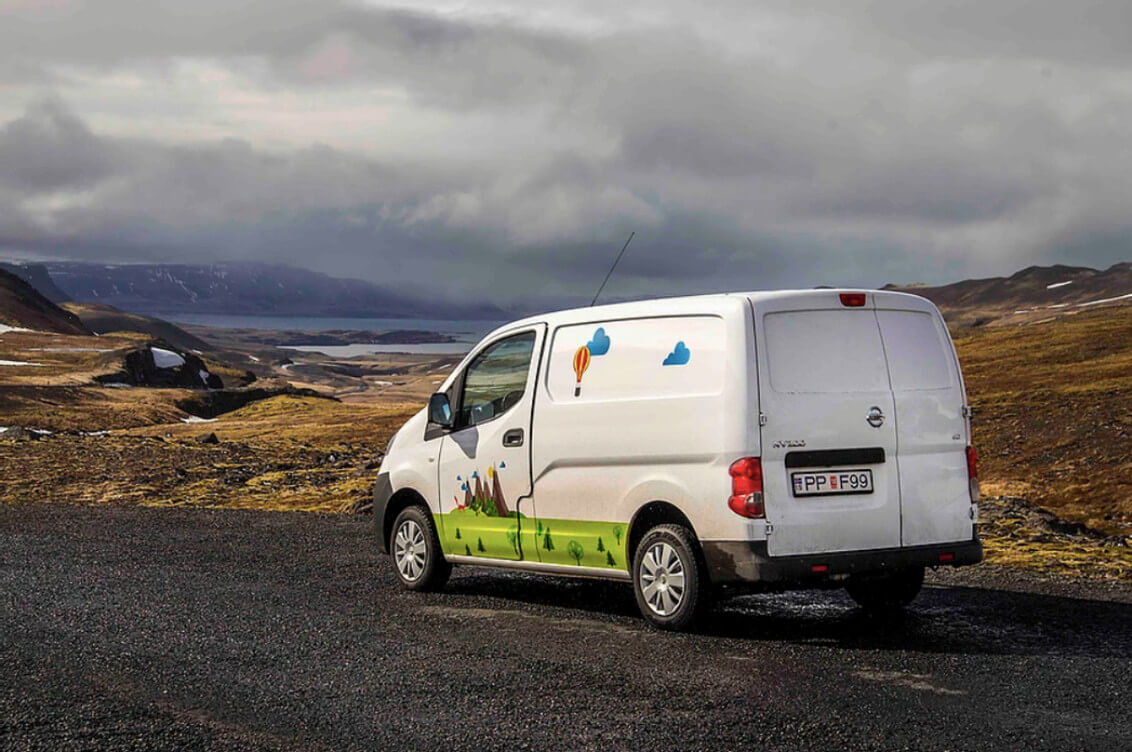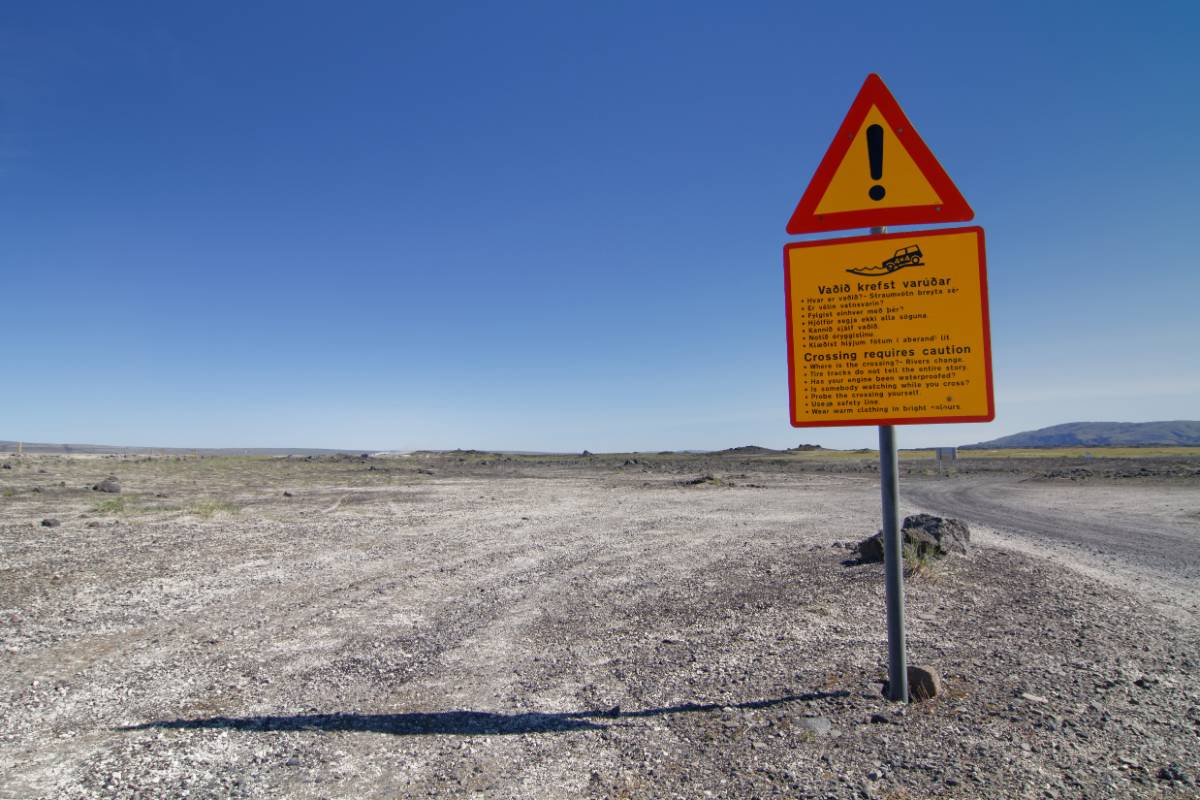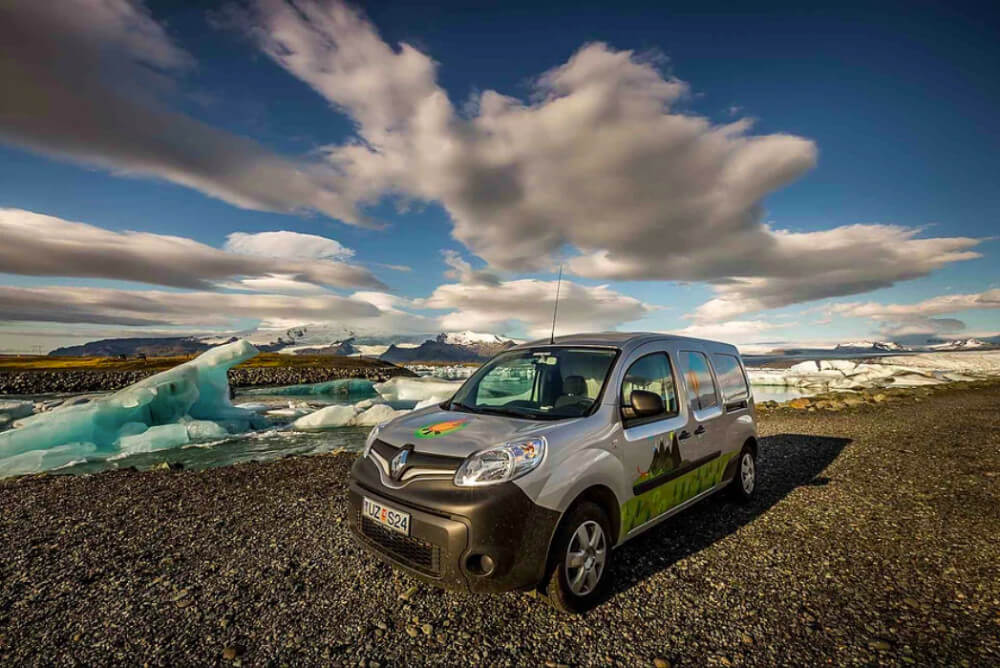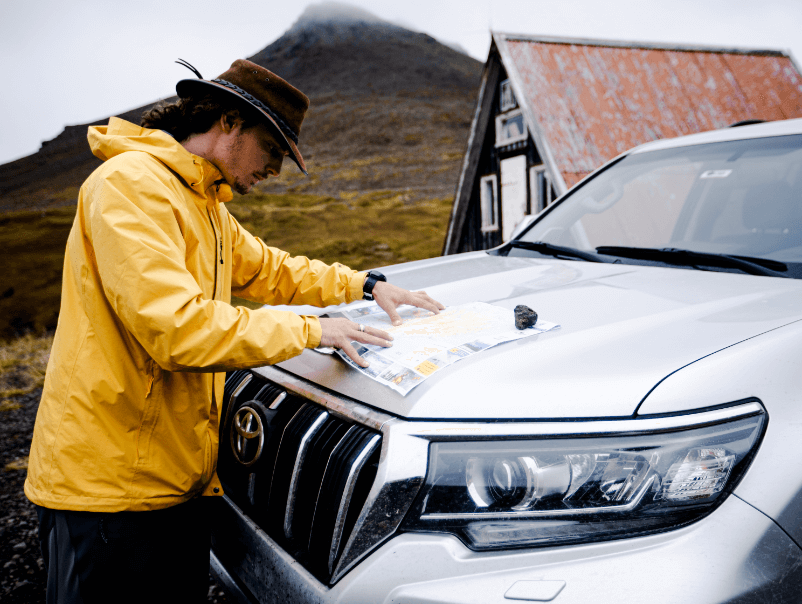Do you want to drive in Iceland in November? That’s kind of brave. Or, perhaps it is just smart? Actually, it is smart, yes, if you’re prepared. It’s not summer. Roads can be icy. Daylight disappears fast.
The weather does what it wants. But that’s kind of the point, right? Fewer people, better prices, and a decent shot at catching the Northern Lights from your camper window. If that sounds like something you’d actually go for, you’re in good company.
We’ll talk you through what November really brings, what it means when you’re behind the wheel, and how to pick a camper that won’t leave you cold, stuck, or both. Let’s help you pull it off.
Why Travel Iceland by Campervan in November?
Why travel to Iceland by campervan in November? Because this month strips the country down to its core and lets you see it without the circus. A camper gives you control in a season that laughs at schedules. Here is why it works:
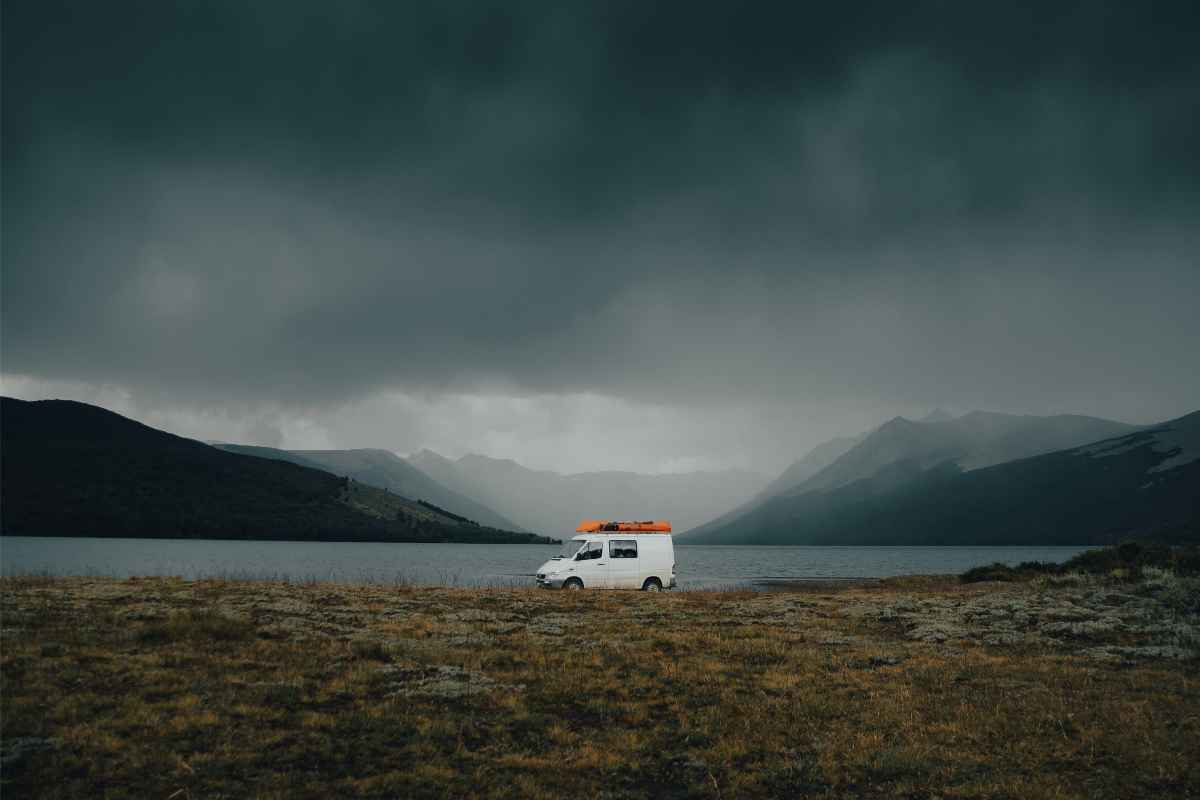
Pros of Visiting in November
- Epic photo op -: Waterfalls freeze in layers, steam curls from geothermal vents, and you can actually frame shots without strangers photobombing. The low sun sits all day, giving that golden glow even at noon.
- Night skies - With darkness lasting 17 to 19 hours, auroras have plenty of stage time. You do not need to drive at ridiculous hours to catch them. Step outside your camper, look up, and wait for the sky to do its thing.
- Affordable - November prices take the edge off Iceland’s usual wallet-punch. Campervan rentals, campsites, and even some tours come cheaper than winter’s peak months.
- Hot springs - Imagine soaking in 40°C (104°F) water with just steam and silence for company. No lines, no noise, just you and the heat.
- Peace - Empty parking lots, deserted trails, and a quiet that makes every stop feel like a secret.
Challenges You Should Prepare For
- Short days - Only a few daylight hours, so you need to plan stops carefully.
- Closed services - Many restaurants, shops, and activities reduce hours or shut completely.
- Changing plans on the fly - Storms can cancel everything. Expect to reroute last-minute.
- Van life quirks - dealing with condensation, frosty mornings, and cooking in cold air.
- Mental game - The darkness and isolation can mess with unprepared travelers.
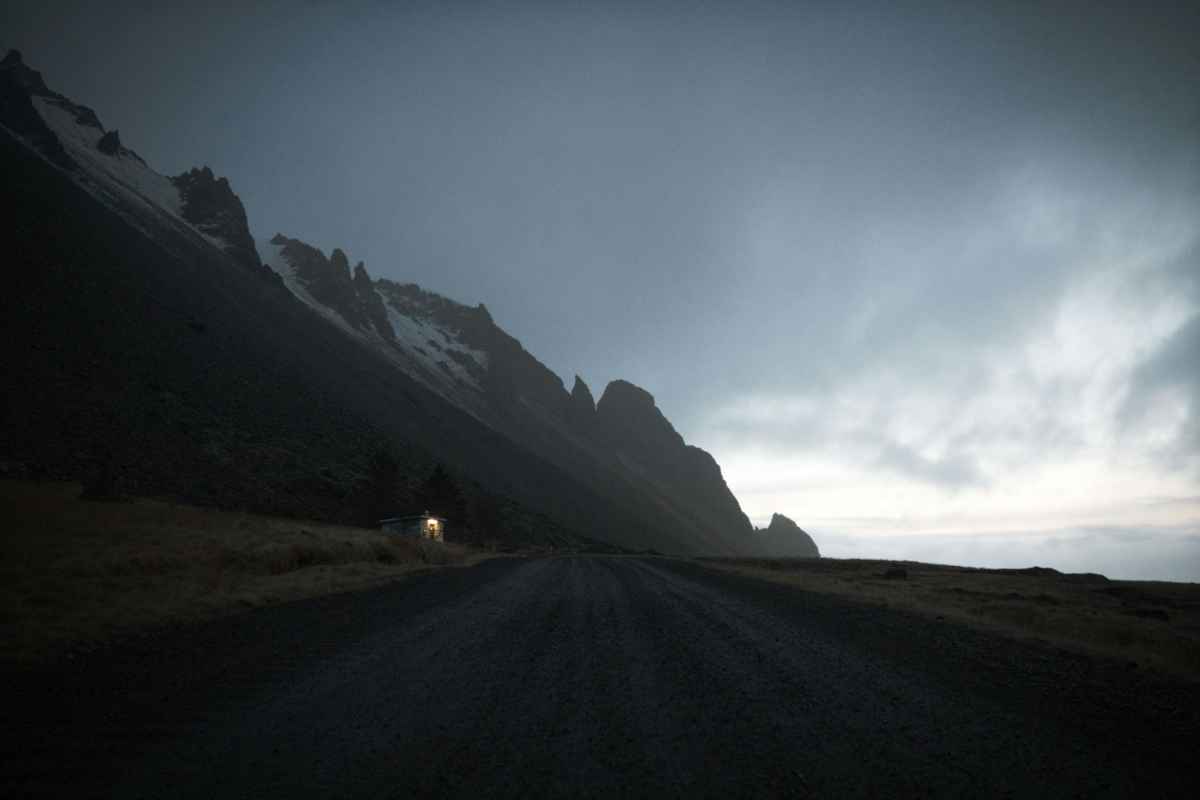
Weather in Iceland in November
November is when winter in Iceland really starts. The landscapes stay beautiful, but the conditions get more serious, especially if you’re planning on driving in Iceland in November. Here’s what to expect on the road and in the sky.
Average Temperatures
- During daytime you will roughly get around 1°C to 8°C (33°F to 46°F)
- At night, it usually drops down to just around freezing (30°F to 33°F)
- It’s colder once you leave Reykjavík, especially up north or in higher areas
Wind, Snow, Rain, and Daylight in Iceland in November
If you're visiting Iceland in November, here’s what you can expect from the elements:
Wind
- Reykjavík’s wind speeds average around 22 to 30 km/h (14 to 19 mph)
- Step into the Highlands or along the coast, and it hits harder. Easily over 40 mph
- Stormy days? Expect strong gusts that are really strong
Snow
- Snowfall ramps up as November rolls on
- Reykjavík gets a few centimeters here and there, and the snow melts pretty quickly
- But up north? Towns like Akureyri can collect up to 30 cm (12 inches)
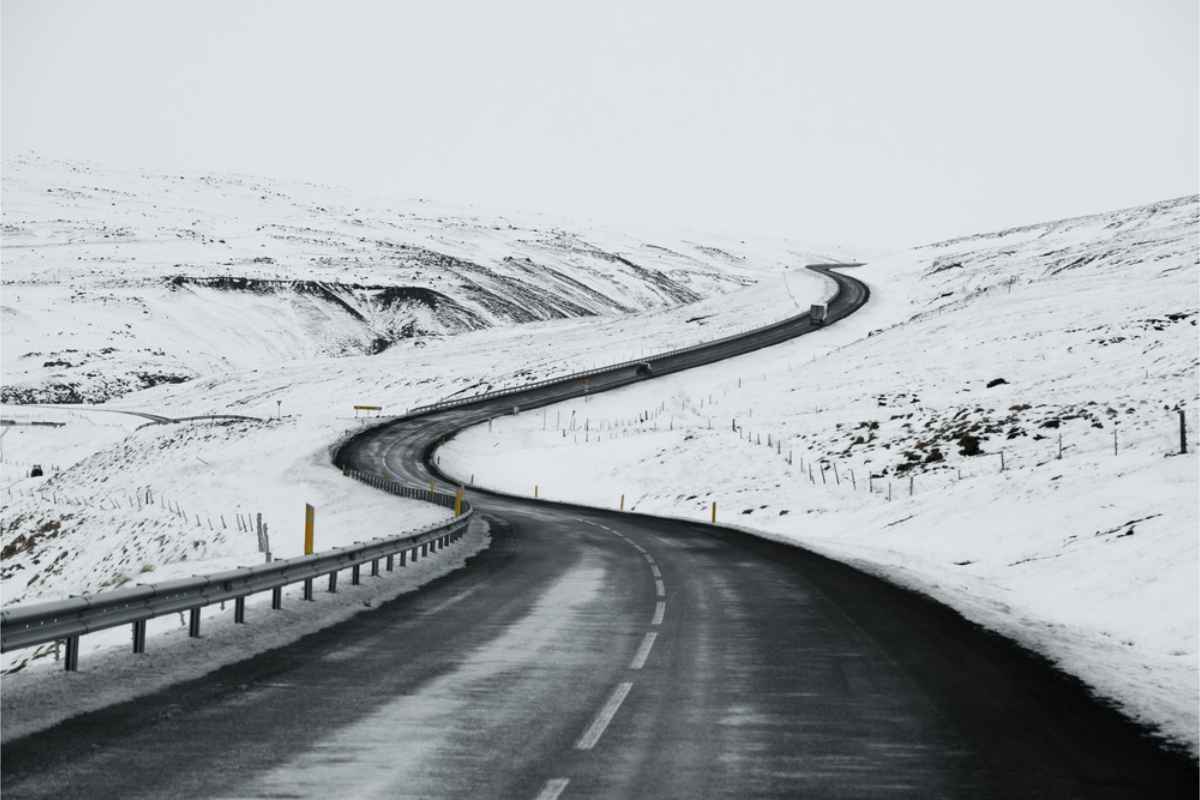
Rain
- November is no joke. It rains. A lot.
- Reykjavík sees around 73 to 80 mm (3 inches) over nearly half the month
- Coastal areas? Even wetter
- Inland? Less rain, more snow
Daylight Hours
- Early November gives you around 8 hours of light
- Late November? Expect only 4 to 5 hours of daylight
- The sun shows up after 10 AM and disappears before 4 PM
Always Check the Weather and Road Updates
- Use Vedur.is for daily weather updates
- Check SafeTravel.is for road closures, hazards, and alerts
- And never leave home without checking Umferdin.is for road updates
Driving in Iceland in November
So, is it safe to drive in Iceland in November? Look, driving conditions in Iceland in November get seriously challenging once October wraps up. Since temperatures plummet, snow and ice become the norm here. That is especially true outside Reykjavík and in the north.
While September and October might just give you occasional icy patches, November? Oh, it brings way more frequent snow, sleet, and straight-up slippery surfaces. Expect those dicey conditions to be brutal, particularly during morning and evening drives. Seriously, you'll need to be prepared for anything.
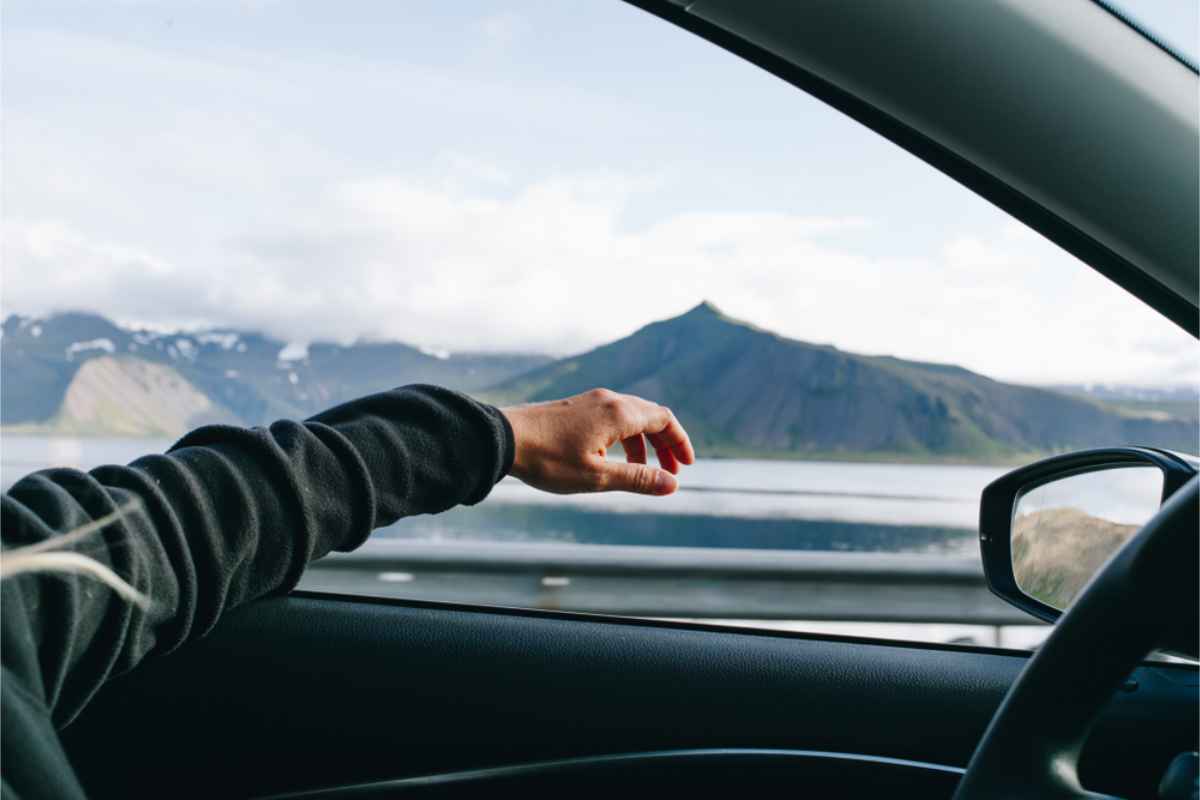
Road Conditions and Accessibility
Alright, so where can you actually drive? Here's the rundown on road accessibility:
- Ring Road (Route 1): Good news here! Iceland’s Ring Road in winter usually stays open. They regularly clear it of snow and ice, so it's hands down your safest bet for winter road trips.
- The Golden Circle: This popular route? Generally open and well-maintained year-round. It's usually pretty manageable, even in winter conditions.
- Highlands and F-roads: Hard pass on these. They're totally closed to all traffic. Expect heavy snow and seriously hazardous conditions, making them a no-go zone.
- Remote regions: Places like the Westfjords, Eastfjords, or anywhere up north? Those roads get pretty risky, sometimes even impassable. Be warned; closures can happen at any time.
What to Pack for November Driving
Packing right is a game-changer for a trip to Iceland in November. Here's a good idea of what you'll want to toss in your bag for driving and exploring:
- Layers: Get thermal base layers (merino wool tops and leggings) and an insulating mid-layer (fleece or wool sweater). Your outer jacket needs to be waterproof and windproof, along with waterproof pants for outdoor activities.
- Footwear: Insulated, waterproof hiking boots with good grip are crucial. Bring several pairs of wool socks and crampons or ice cleats for icy paths.
- Essentials & Personal: Pack a warm hat, scarf, and gloves (waterproof if possible), plus a neck gaiter or balaclava for wind protection. Don't forget a swimsuit for hot springs, a headlamp for short daylight hours, and a power bank for charging devices on the road. Sunglasses for glare, along with moisturizer and lip balm for dry, cold air, are also key.
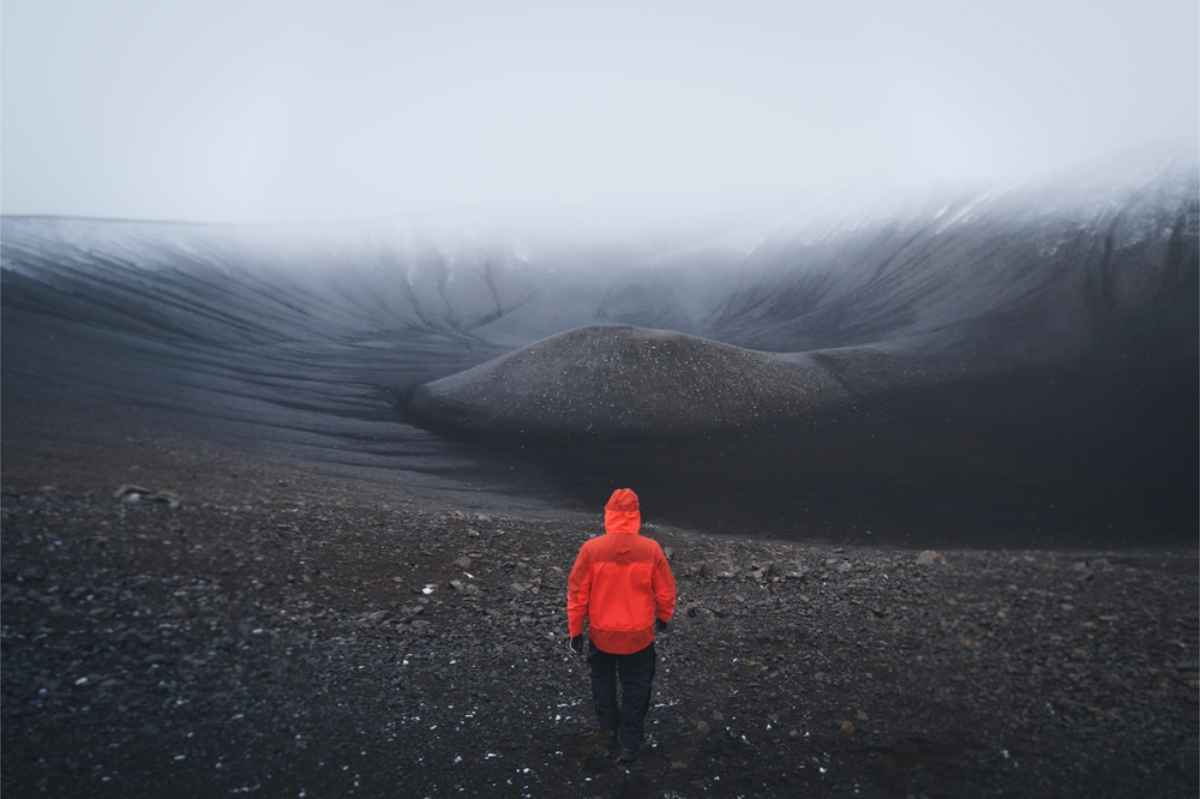
How to Handle Icelandic Wind
When you're driving around Iceland in November, we can’t warn you enough about the wind. Like genuinely, watch out for those strong crosswinds; they're everywhere on open roads, bridges, and coastal spots.
- Always slow your speed down and give other vehicles plenty of extra room. And trust us, keep both hands firmly on that steering wheel, okay? You need that control for sudden gusts.
- Opening car doors? Do it super carefully, with both hands, just one door at a time. If you can, always park your car facing right into the wind; it helps avoid nasty door damage.
- Before you even think about heading out, always, always check the wind forecasts.
- Try your best to avoid stopping in really exposed areas, like those windy hilltops or wide-open plains.
- Big heads-up if you're in a campervan or SUV, too. Those vehicles are way more affected by strong winds, so you'll definitely want to take extra care.
Drive Slower Than You Need To
Speed limits don’t always match road conditions. Here are some nifty winter driving tips in Iceland for you:
- Keep your speed under 80 km/h (50 mph) on slick roads
- Brake early and gently to avoid skidding
- Take corners slower than usual
- Double your following distance
- Expect delays and plan extra time for your trip
- Choose control over speed every time
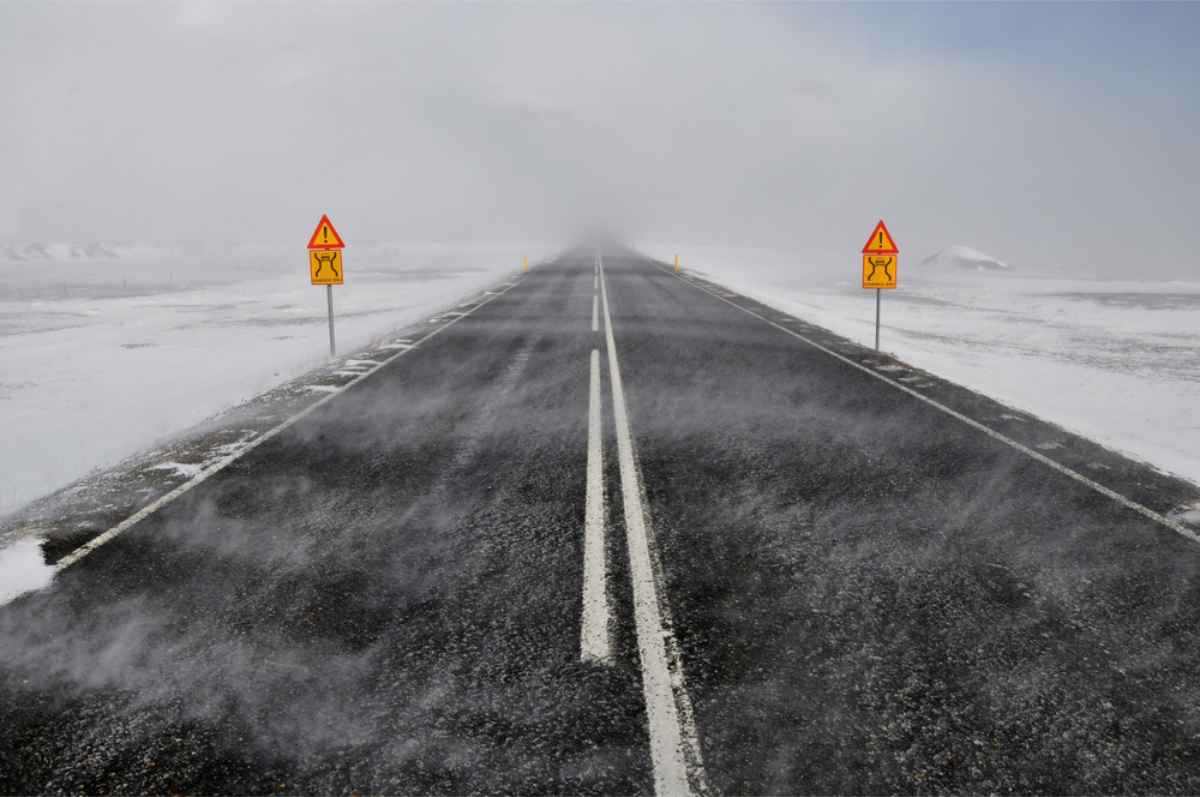
How To Find Campsites
If you're planning to camp in Iceland in the off-season, you can’t just pop in at any campsite. Campsites in November are limited. What now?
- Only a small number of campsites stay open through winter
- Use the Parka app or Tjalda.is to check which ones are available
- Look for sites with electric hookups so you can stay warm and charge your gear
- Most charge around 1,000 ISK (about 8 USD) per night for power
- Check availability ahead of time since spaces are limited and conditions change fast
Recommended 3, 5 & 7-Day November Itineraries
Picking the right trip length matters more than you might have even thought. A 3-day run covers the essentials without rushing, perfect for travelers who just want Iceland’s highlights without freezing their sanity. 5 days strike the sweet spot, giving time to see more without testing winter patience.
Go for 7 days if you want full immersion, with extra room to handle storm delays and still enjoy it all. These plans are built for November’s mood swings, not for ticking every box on a map. Each route balances safety, daylight, and wow moments. Keep scrolling for details that actually work in winter.
3-Day Itinerary - Golden Circle & South Coast
- Day 1 - Grab your camper and go straight for the Golden Circle. Go walk in Thingvellir, then watch Strokkur Geysir erupt, and stand at Gullfoss before finding a spot to park for the night.
- Day 2 - Head southwards. Stop at Seljalandsfoss, Skogafoss, and the Black Sand Beach near Vík. End the day with the van warmed up and the coast outside your window.
- Day 3 - Morning glacier hike or an ice cave tour, then head back to Reykjavík to catch your flight back home.
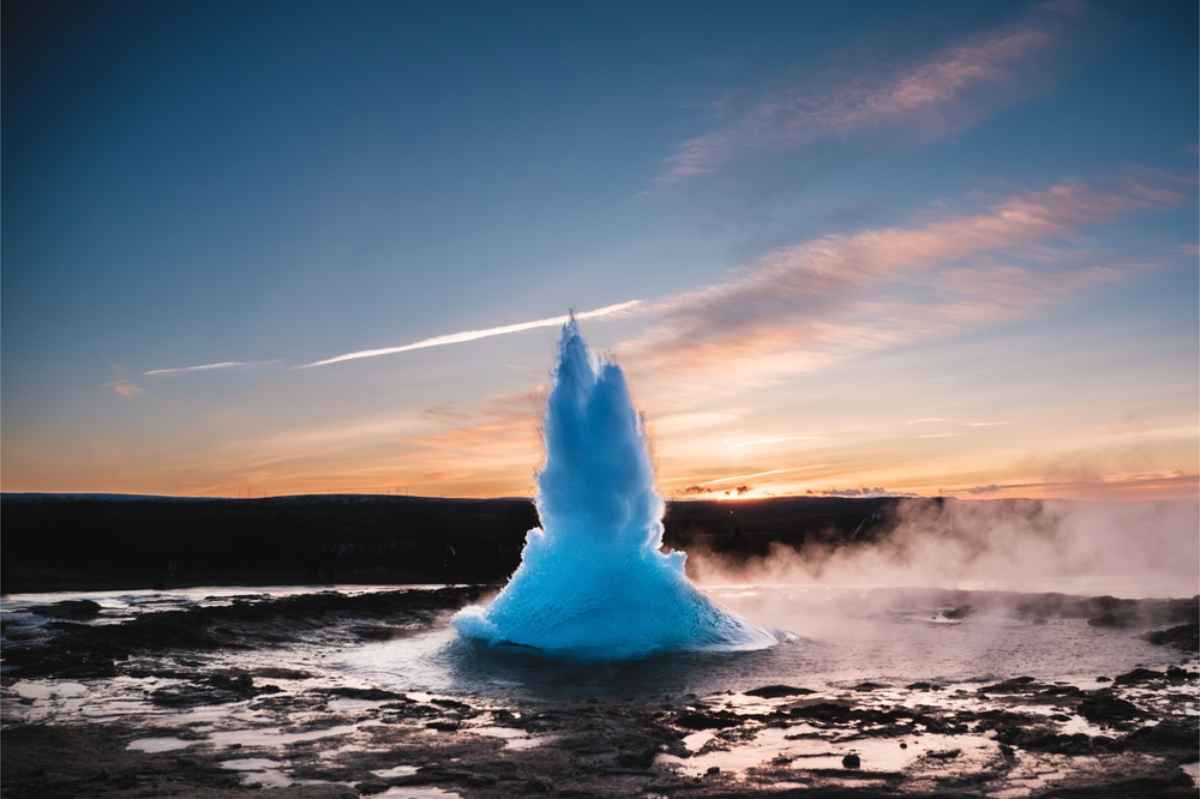
5-Day Itinerary - South Coast Extended
- Days 1-2 - Same start as the 3-day trip, only slower. Take your time with the waterfalls and beaches.
- Days 3-4 - Push on to Vatnajökull. Get into an ice cave, drift by Jökulsárlón glacier lagoon, and walk Diamond Beach with barely a soul around.
- Day 5 - Drive back west, stopping where the views demand it, and end up in Reykjavík.
7-Day Itinerary - South Coast & Canyons
- Days 1-3 - Follow the 5-day pace.
- Days 4-5 - Add Fjadrárgljúfur Canyon and hiking trails in Skaftafell.
- Day 6: Take the slow road back with three underrated stops. Walk behind Kvernufoss, the quieter cousin of Skógafoss. Soak in the atmosphere at the abandoned Seljavallalaug Pool. Finish with the raw power of Urridafoss, a wide waterfall most people miss.
- Day 7 - Finish with a soak at Blue Lagoon or Sky Lagoon before catching your flight.
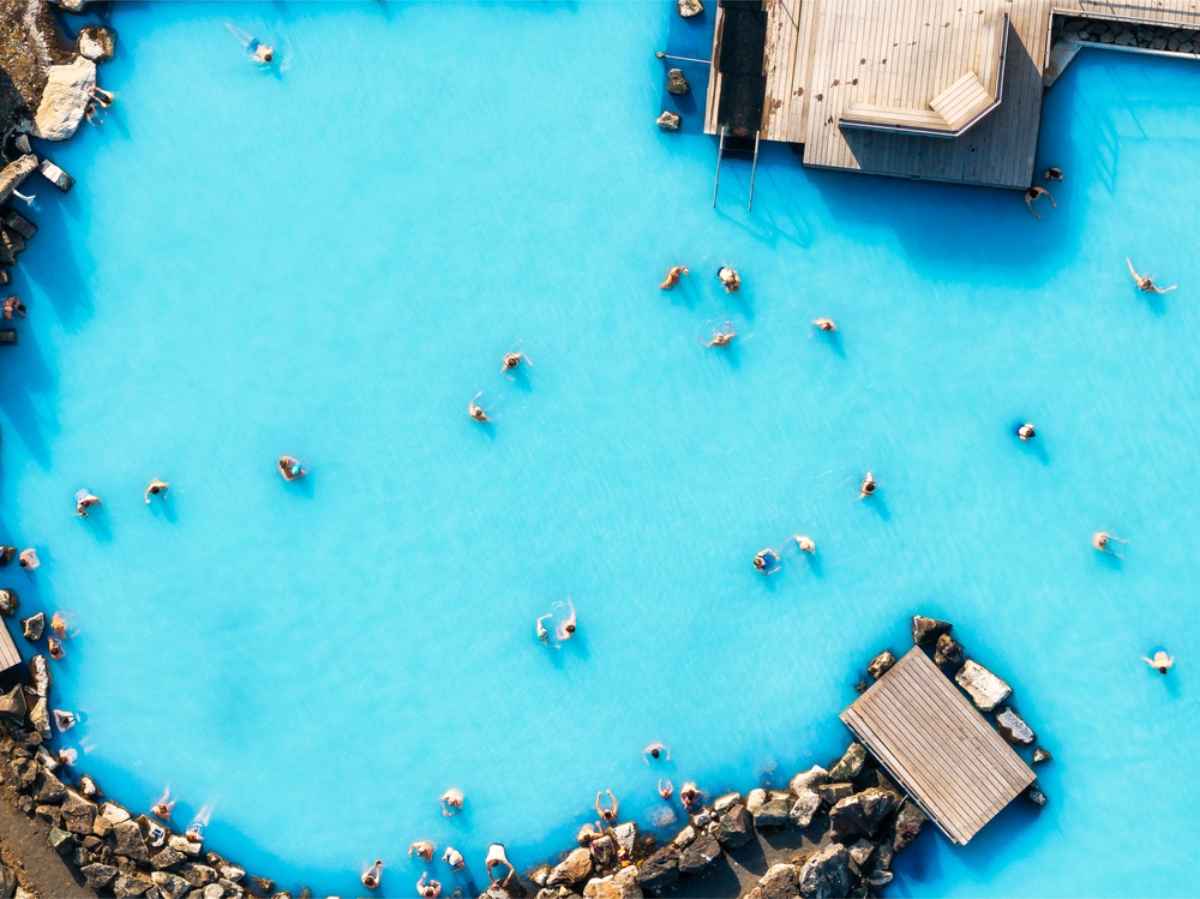
Safe and Scenic Routes
Some roads in November behave. Others try to kill you. The southern stretch of the Ring Road? Reliable, plowed, and forgiving enough to let you breathe. Take it slow, and it treats you well.
Want detours? Snaefellsnes Peninsula stays open, dramatic without being deadly. The South Coast waterfalls still roar, and Reykjanes hot springs bubble like they forgot it is winter.
Skip the northern fjords unless sliding around icy cliffs is on your bucket list. Same for mountain passes; they close without warning. Night driving? Do it only if you enjoy clenched jaws and white knuckles. Daylight is your friend here.
Fuel Stops, Groceries & Parking
- Fuel - Big chains like N1 and Orkan keep the pumps running along main routes, but once you hit the South or East Coasts, gaps between stations stretch out. Top up whenever you can. Never let your tank drop below a quarter in winter unless you enjoy testing how far you can walk in a blizzard.
- Groceries - Reykjavík, Selfoss, Vík, and Höfn have proper supermarkets where you can load up on real food. Out in smaller towns, expect overpriced snacks and limited options. Stock up on simple meals you can cook in the van.
- Parking - Use winter campsites, especially ones with power hookups, to stay warm and charged. Lay-bys are fine for quick stops, not for sleeping. Off-road parking? Illegal. Same for private land unless you like fines. Check overnight rules ahead of time.
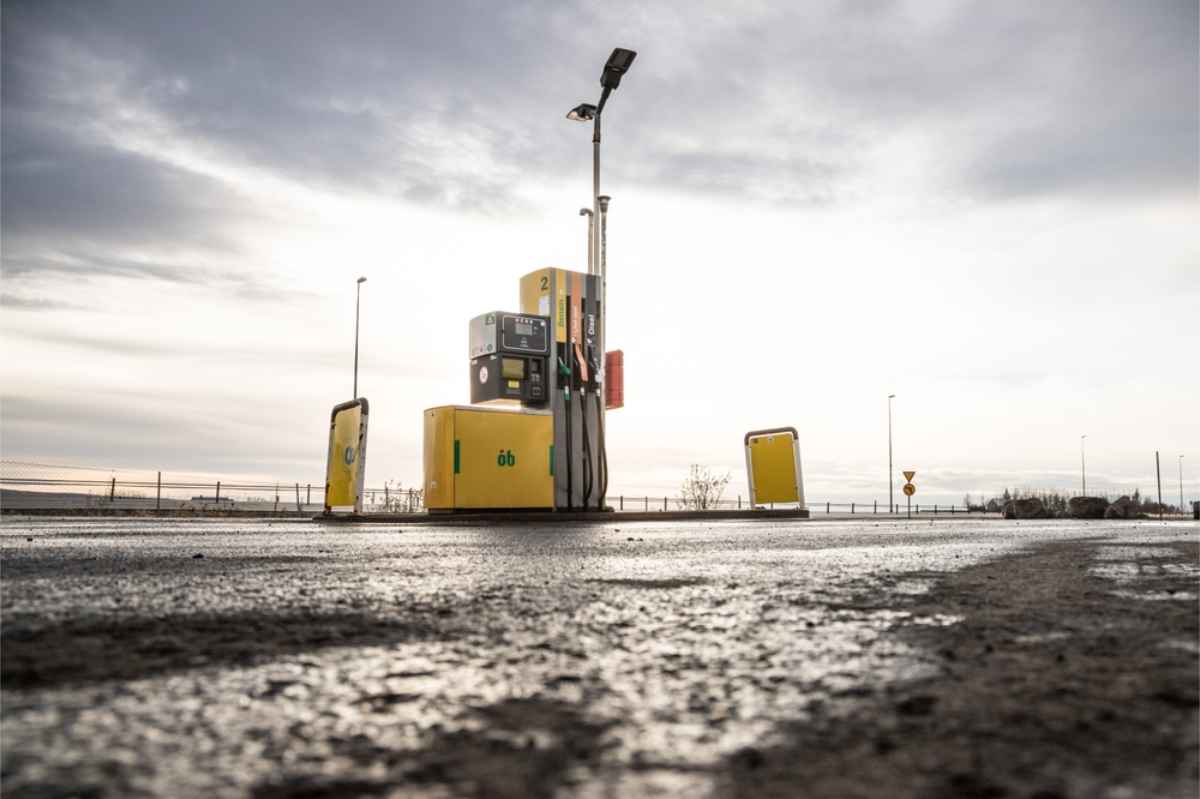
Map: Route Suggestions
You could rely on Google Maps and pray for a signal in the middle of nowhere, or you could plan like someone who actually knows what they are doing. Grab a printable map or use an interactive one from a decent travel blog (like ours), not some random forum.
Mark the obvious safe bets: the Golden Circle and South Coast stay open and make navigation almost too easy. Pin your campsites, fuel stops, and must-see spots for each day. If you think you will ‘just figure it out on the road,’ enjoy missing half of them.
Download offline maps before you leave Reykjavík. Signal dies fast in remote valleys, and guessing turns on icy roads is not as fun as it sounds. Route your stops in advance, because nothing ruins a trip faster than driving in circles while the wind shoves your camper around.
Best Type of Campervan for Driving in Iceland in November
For a winter trip to Iceland, your campervan choice matters. Go for one with a heated interior. Webasto or dual heating systems work best to keep things warm at night. If you’re not used to icy roads, pick an automatic transmission. It’s one less thing to think about when conditions get rough.
A compact van handles better in wind and snow, especially on narrow roads. You don’t need a 4x4 for the Ring Road, but it helps if you plan to explore gravel routes. Avoid roof tents unless you rent with us. Ours are fully insulated with thick fiberglass and built for winter.
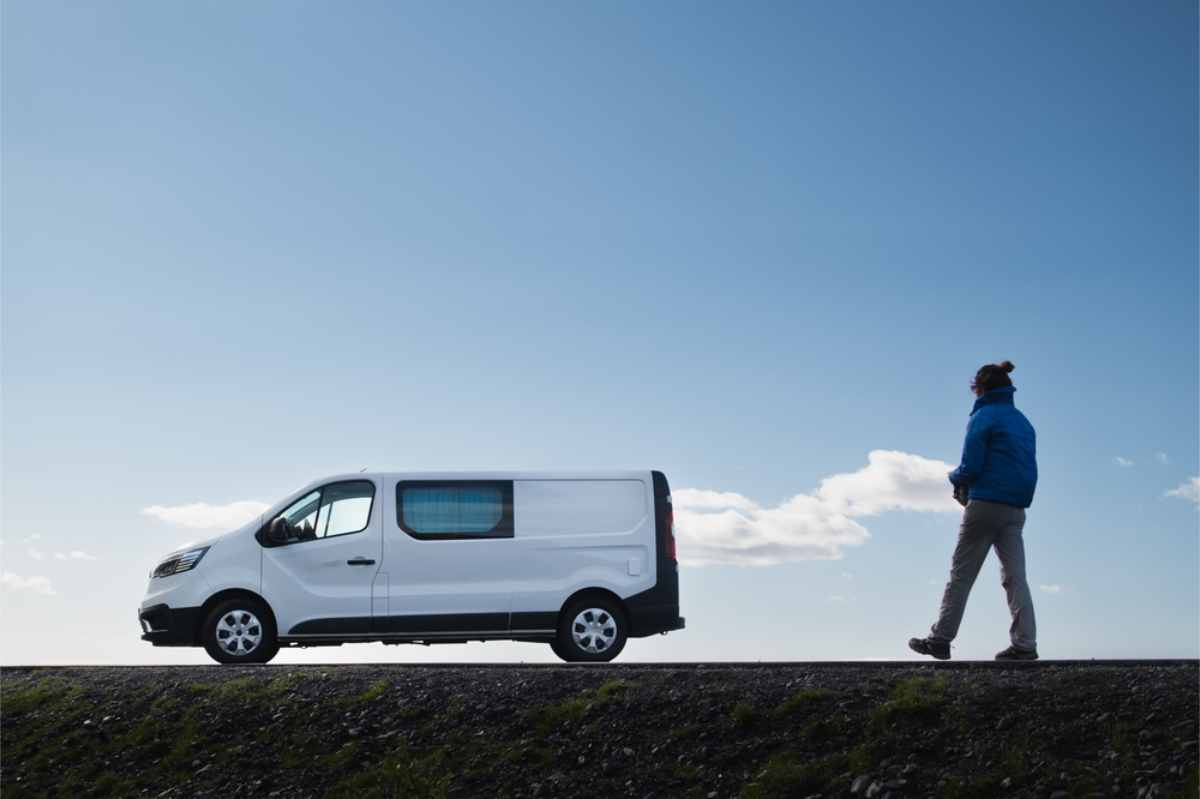
Top Rental Campervans in Iceland for November
About selecting the right campervan for Iceland in November. Not every vehicle handles this season well. Comfort in wild weather, reliable heating, exceptional handling, and ample interior space are essential.
Whether you travel solo, with a partner, or as a group, a suitable van exists for your trip and budget. Here are three excellent picks from our fleet for campervan travel in Iceland this November.
Best for Budget Travelers: Campervan Play
Our Campervan Play is the best campervan for Iceland in winter since it is perfect for solo travelers or couples who want to keep costs low without freezing overnight.
- Compact and easy to handle
- Seats and sleeps 2
- Built-in automatic heating system in the sleeping area
- Fully equipped kitchen with stove and fridge
- Great for basic Ring Road travel
Best for Couples Who Want Comfort: Campervan Play Max + (automatic)
Ideal for duos who want a cozy, winter-ready van with real warmth and comfort.
- Dual heating system (Webasto + campsite power)
- Sleeps 2 with comfy bedding and great insulation
- Fully equipped kitchen with gas stove and cooler
- Bluetooth radio, optional WiFi, and a table with chairs
- Smooth automatic drive for icy roads
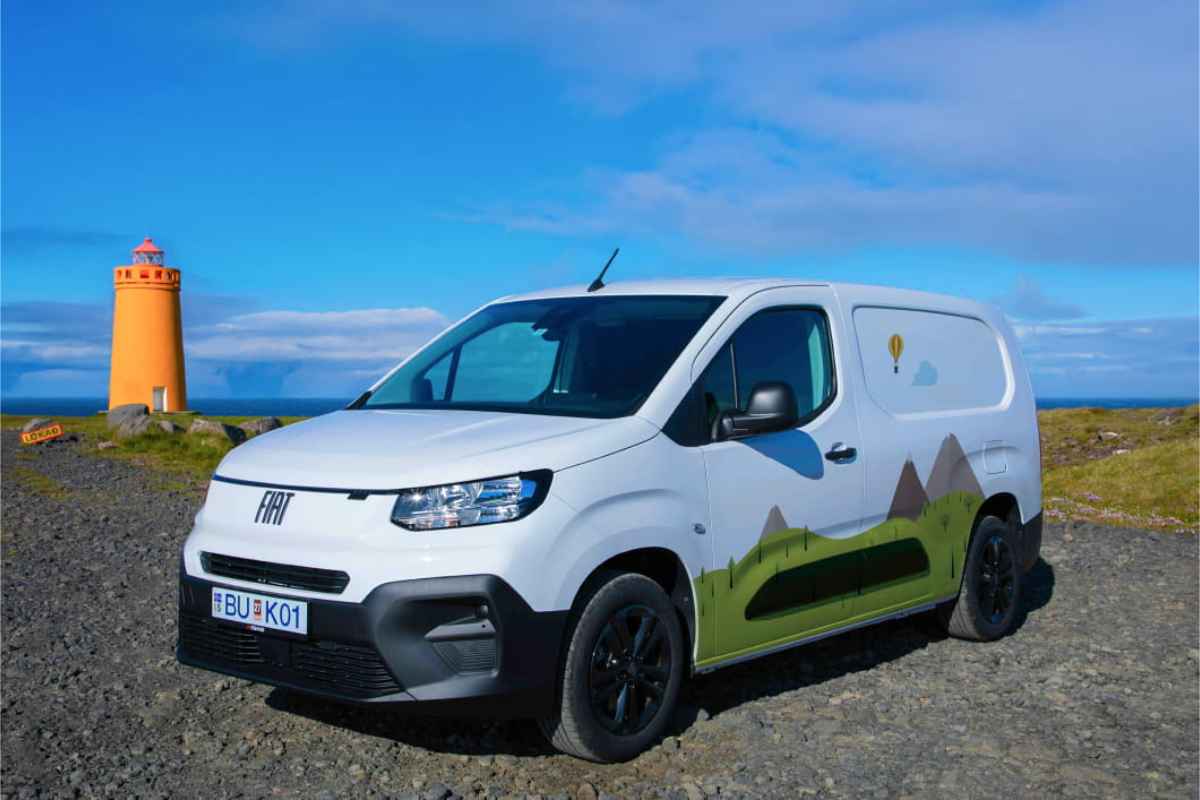
Best for Small Groups: Campervan Fun Auto + (automatic)
A great fit for friends or a small family wanting extra space and warmth.
- Seats and sleeps up to 3 people
- Dual heating system (drives and charges while you roll)
- Spacious layout with dining area and a big bed
- Full kitchen setup and plenty of storage
- Perfect balance of comfort and functionality
Ready to rent a campervan in Iceland? We’ve got you covered. All our rentals come with free winter tires, so you're set for November roads right out of the gate. No hidden fees, no extra charges. Just properly equipped vans built for the season. If you’re planning a trip, locking in your camper now is a no-brainer.
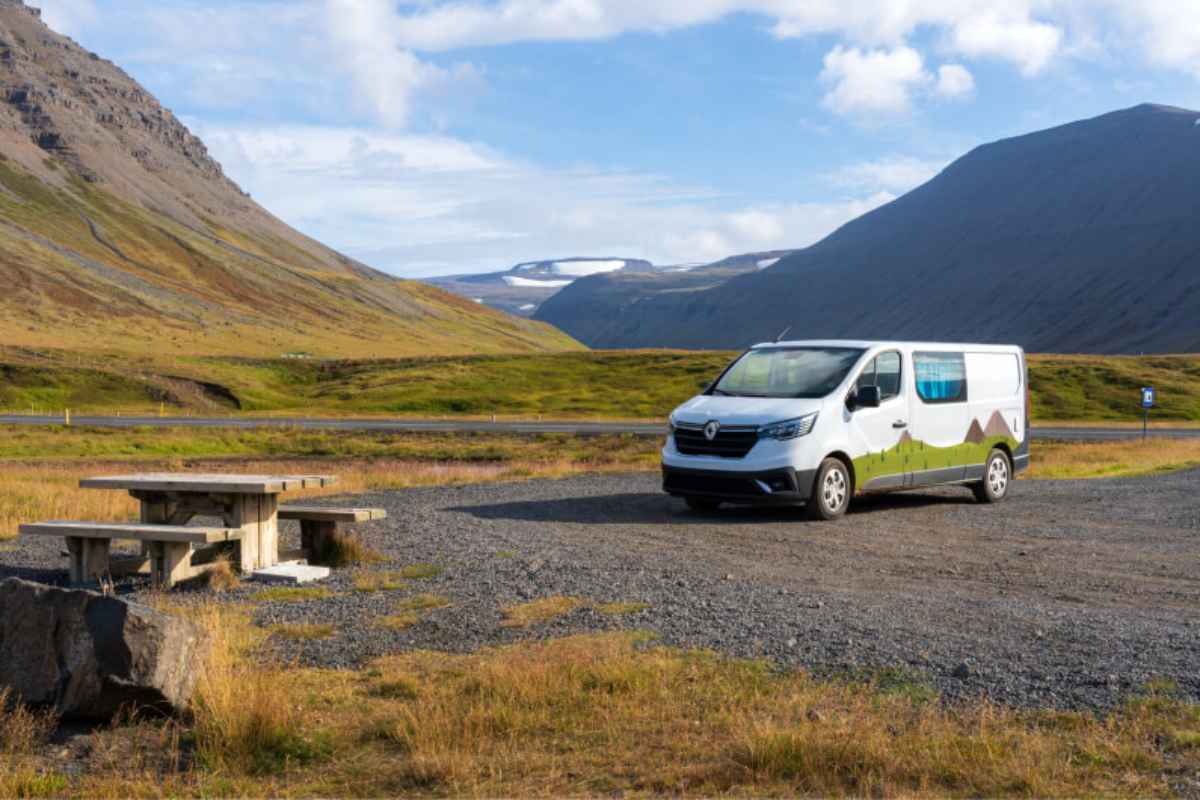
FAQs About Driving in Iceland in November
Is it safe to drive in Iceland during November?
Yes, with some smart choices. Stick to the main routes, for sure. Keep your speed down. Always check weather updates. Crucially, your camper better be ready for winter: proper tires and good heating.
Do you need a 4x4 in Iceland in November?
A 4x4 is not strictly necessary. Seriously, your average camper usually cruises the Ring Road just fine. But if those rural areas are calling your name, yeah, extra traction might just save your day.
How hard is it to drive in Iceland in winter?
It's a mixed bag, really. Depends heavily on the specific weather of the moment and, frankly, your own driving chops. You'll hit icy patches, maybe fierce winds. Stay sharp, go slow. It's doable.
Is it a good idea to go to Iceland in November?
Heck yes. It's usually a lot easier on the wallet, way less crowded, and has that winter vibe. Totally immersive. Just prep for weather swings and shorter daylight hours. Still, worth every bit of it.
What kind of insurance do I need?
Listen, CDW is your absolute baseline. However, for November trips, consider Premium or Platinum coverage. It just cuts out so much stress. You're protected from weather damage and all sorts of unforeseen road trouble.
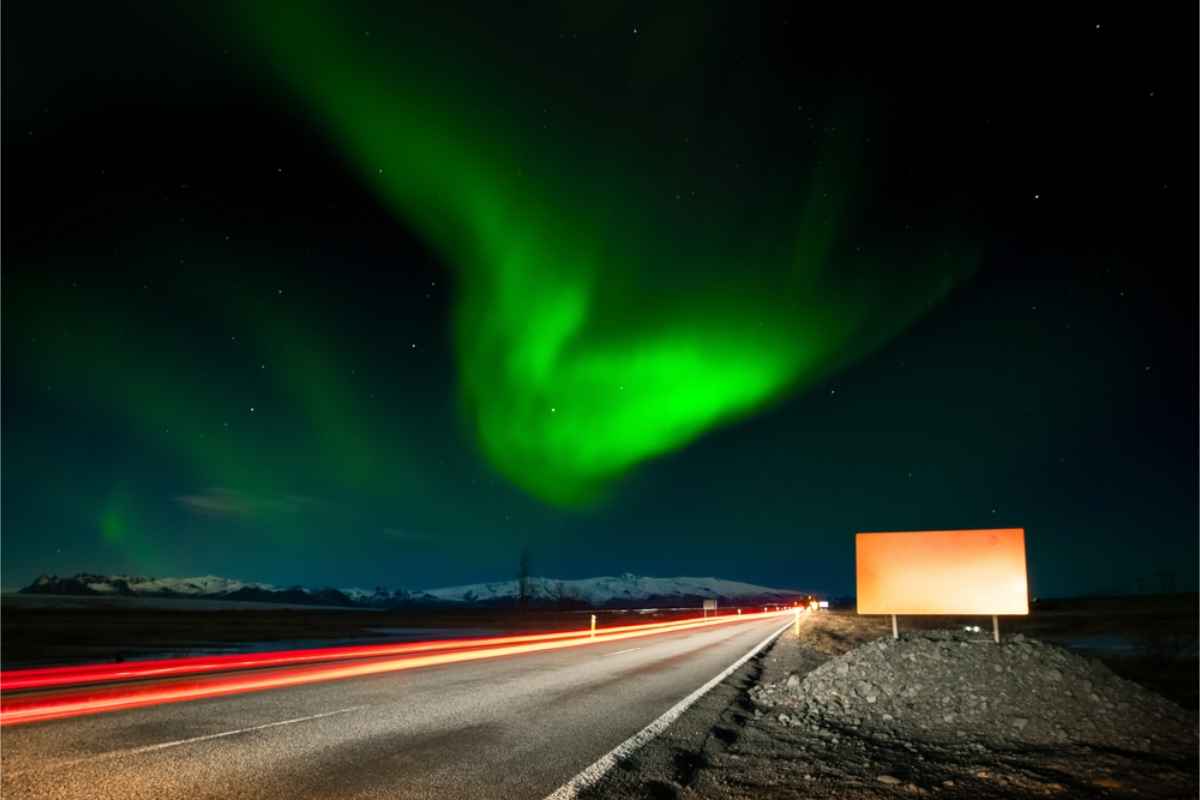
Can I see the Northern Lights?
A big yes. November offers plenty of long nights often clear skies too. Find a dark place. Check the aurora forecast. Then, fingers crossed for some real magic.



 By
By 
